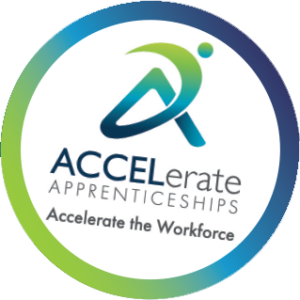 ISTOCK.COM/IMAGINIMA
ISTOCK.COM/IMAGINIMA
Technology has reshaped recruiting in almost every industry, including seaports. So has the consumerization of the recruiting process, the prioritization of the candidate experience, a recognition of the value of inclusion and diversity, and a shift toward a mutual candidate-employer evaluation.
A few decades ago, simply posting an ad in the classified section of the local newspaper was enough. Now, using technology, online job boards, social media and other tools, recruiters can pull from a broader pool of talent, whittle down the candidate list quickly and efficiently, expedite interviews and control costs.
The COVID Effect
Port recruiting has evolved quickly. Just as the pandemic helped rewire global supply chains for faster delivery, it rejigged recruiting, with job candidates expecting a shorter and less cumbersome recruitment process than before.
According to online recruiter ZIPPIA, 4% of job seekers now hear back from a perspective employer within one day.
COVID-19 has driven change. In a 2021 article in HR Executive, Matt Alder, producer and host of “The Recruiting Future Podcast,” said “COVID accelerated the creation and adoption of recruiting automation tools by … several years.” He anticipated a complete “reinvention of recruiting processes — particularly when it comes to interviews, assessments and candidate experiences — as vital tools to sell the employer brand.”
Sandy Witz is the director of human resources for the Port of Long Beach. She said, “We were forced to innovate and adapt by the pandemic. Three years ago, it was a big change to have an alternate work schedule, working every other Friday.” Then the pandemic hit. “Employees had to stay at home. It shattered our conventions about where work gets done. It revolutionized the way we work.”
“Right now, it is the best of both worlds. We have become flexible and adaptable. We modified all our recruitment processes by going virtual. It allows for flexibility and inclusiveness and now we can focus on the deliverable,” said Witz.
The pandemic inspired changes at many ports. “Its gift to us was that we learned we could get things done while working remotely,” said Parm Hari, VP of people, process and performance at the Vancouver Fraser Port Authority. The port now has a flex-remote work policy. Her department continues to refine policy details to complement employee health and wellbeing, while providing some flexibility and sustainability.
Outreach Revised
According to ZIPPIA, about 80% of job searches are now done online.
Port recruiters are using ZipRecruiter, LinkedIn, CareerBuilder and many other boards in their process.
They are also using AI, directly or through online services, for everything from game-based pre-hire assessments to job-ad spending optimization.
Technology and digitization can accelerate recruitment by eliminating tedious resume filtering. Chatbots can help answer applicant questions in a timely manner. And candidate rediscovery tools can search through past applicants for new positions.
Kimberley DesMarais is HR talent management director at the Port of Seattle, where the number of airport and seaport positions runs close to 2,500. She said virtual job searches are now the norm.
That shift informs the port’s job postings and recruitment, which have largely moved to online job boards and niche postings (placed with, for example, industry and professional associations, and colleges and universities).
Likewise, Vancouver Fraser Port Authority posts “where people spend their [online]time,” said Hari.
Luis Navarro is director of workforce development at the Port of Seattle, supporting aviation, maritime, construction, and green jobs in the community. He said that leveraging port employee networks has proven to be another excellent way to get word out about jobs. In his experience, word of mouth can reach locally, nationally and even globally.
According to ZIPPIA, most jobs are never advertised and a full 85% are filled through networking. That’s not the case, however, at the Port of Seattle — or indeed, at many ports with civil service or unionized positions. “As a government agency, we have to be able to show we are collecting applications, screening according to qualifications posted, reviewing impartially, and not discriminating,” said DesMarais.
Improving the Candidate Experience
Seaports recruiters are realizing benefits from treating candidates like consumers, giving them a quick and easy application process, and sometimes personalizing outreach and communications.
Witz said, “In recruitment, we used to be employer-centric. With changing technology and a new generation, we’ve become candidate-centric.” As part of that, Long Beach has a candidate connect, which helps candidates learn about the port, the position, port values and other information.
There is also more frequent contact with candidates. “It is a hot job market. People aren’t waiting months and months to find out where they stand,” said Witz.
In an age when technology has, to a certain extent, dehumanized recruiting, it takes effort to create relationships with candidates. Recruiters that civilize the process can help bring top candidates into the fold.
Hari said, “It is about the journey of people from the moment they look at the job posting, throughout their entire time with the port.” The port now dubs recruiting candidate acquisition, a positive spin on a decidedly complex process.
Sharing a port’s mission, culture, value proposition, sustainability agenda, stability, and economic importance might provide just the competitive edge needed to sway top talent. Or simply relying less on external recruiters, and bringing recruiting agency experience in-house, as the Vancouver Fraser port is doing, might bring momentum to a port’s employer-branding goals.
At the Port of Seattle, DesMarais said many candidates find flexible working arrangements and teleworking attractive. Interestingly, many also now ask about corporate values. The acronym RAISE describes Seattle’s commitment to Respect, Anti-racism and equity, Integrity, Stewardship and Excellence.
One of the most striking changes in port recruitment in recent years has been the shift to a more mutual candidate-employer evaluation process. Employers need the right candidate but job seekers also need to choose the right employer if they are to stay and excel.
The Evolving Art Of Employee Retention
STOCK.COM/MOHD IZZUAN
Retaining employees is an art. At the Port of Long Beach, Witz said the port works hard to engage staff. Corporate culture, affiliation and affinity — being connected to teammates — and the life-work balance is important to help improve retention.
With about 535 teammates, “The port is large but familial, collaborative. There is a pride in working for the port,” said Witz. From team-building meetings, to a women’s leadership circle, to a team-based band called the TEUs, the port has a spirit of camaraderie.
Long Beach has identified training and development as a key value. “We are port proud, but honestly, I think the most important way we help retain people is our commitment to career development and training,” Witz said.
At the Port of Seattle, a mentorship program, helps with retention by illustrating viable career pathways. DesMarais said, “We have a small but mighty training and development program. We can’t offer every single development opportunity but we do ask managers to create development plans for their employees.” Those plans might include leadership training, mentorship, or an internal internship (usually in a different functional area).
The Port of Seattle is proud of employees that have moved upward or made successful lateral job transitions, like the airport security screener who leveraged her content creation hobby to become an HR communications video specialist, or the receptionist who became an art program manager.
In New Brunswick, Port Saint John’s People and Culture Manager Emily McGill talked about multiple aspects to the port’s employee retention strategy. She said, “A focus on industry-leading compensation is always a consideration, but more recently, continued flexible work arrangements and investments in training have been important for our employees.”
Looking ahead, McGill said, the port will further ramp up its investment in health and wellness benefits and meaningful community involvement.
Happy, healthy staff are key to port — and community — progress and success.
Diversity and Inclusion
Hari said her department invests time developing relationships with potential workers to build the talent pipeline over time. That includes building referral networks, and unearthing specialized talent options. For example, Vancouver Fraser port is looking at a program to bring retirees back — their expertise and institutional knowledge may be especially helpful in mentoring the younger generation.
Diversity and inclusion have been successful at the port, where 52% of the workforce is female. “Our goal is to produce a diverse candidate pool. And having the right diversity on a hiring panel will help make better hiring decisions,” said Hari. (For more on ports’ diversity, equity and inclusion efforts, see “Leading by Example” on page 20.)
Navarro agreed. At the Port of Seattle, hiring panels provide strategic guidance to hiring managers. The panels are “an impactful, intentional part of the hiring process that brings diversity of thought to the process.”
DesMarais said diversity, equity and inclusion principles are now embedded in every job posting, and throughout the hiring process. She said that the move away from in-office interviews for the initial stages of candidate screening helps the port truly focus on job qualifications.
Raising employer and job awareness helps build the workforce of the future. Navarro said that means outreach to schools and working with community-based organizations (especially in communities of color, immigrants, refugees, veterans and tribes) to share information about port and related jobs and training opportunities.
The port runs an extensive high school internship program that introduces many diverse groups to port jobs. The creativity of student interns has paid dividends — in one case, students organized a showcase of Native American artwork that is housed at the Seattle airport.
The Vancouver Fraser Port Authority also invests in internship and educational initiatives. “We have co-op training, summer students, agreements with First Nations — even a specialized marine patrol program,” said Hari.
The Port of Seattle’s Veteran Fellowship program, which has been in existence for more than a decade, also attracts great talent. Initiated at a time when unemployment was high for veterans, it helped with transitioning into civilian careers. Fellowships last three to six months, bring in veterans at levels that utilize their often specialized and/or technical skill sets, and have resulted in a number of hires.
Witz said, “Long Beach is on the road to a more inclusive and comfortable workplace for all.” She called the port’s new 50% telecommuting a ‘game changer’ for the current workforce and new recruits. She said sharing a culture statement about belonging helps: “At a grassroots level, that yields a fairer recruitment process.” So does redacting name, age, address, etc. to work toward a ‘blind audition’ on skill sets, and composing interview panels balanced by gender and race. “We are also mindful of language,” to help ensure a fair and equitable process for all.
The Way the Wind Blows
Ports sometimes have jobs that would be unfillable without a lot of hard work. The Port of New Bedford is a proponent of the blue economy of marine stewardship, and is leveraging the expertise and assets that made it America’s most valuable commercial fishing port, to help establish America’s first offshore wind port.
Jim Oliveira, executive director and CEO at MassHire Greater New Bedford Workforce Development Board, describes the partnership with the Port of New Bedford to strategically cultivate a workforce for the region’s emerging offshore wind hub as foundational, building a talent pipeline for an industry that is new to the U.S.
While it is a monumental task, Oliveira said broad collaborations are already in place, building on existing strengths in parallel ocean industries and with educational institutions and others.
For example, the University of Massachusetts Clean Energy Extension Program now offers an Offshore Wind Professional certificate, and Bristol Community College’s National Offshore Wind Institute has committed to help accelerate and support the emerging offshore wind workforce.
Other initiatives include the launch of a program to “market” offshore wind industry jobs to young people (even before they begin high school), working with unions to start preparing for new types of work, and building relationships with existing waterfront employers with a view to apprenticeships and mentorships.
According to John Regan, director of policy and external affairs at the Port of New Bedford, the port is “first and foremost a fishing community — that’s our bread and butter — we want that to coexist and thrive with the offshore wind industry. We have to look at it for the long term, from a holistic level. For the next ten years our port facilities will be a construction hub.” Jobs will evolve. After installations are complete, port facilities will serve operations and maintenance, and workforce skills will shift in that direction. “Offshore wind jobs aren’t going away,” said Regan.
For New Bedford, workforce development is a requirement, not an option. It comes as part and parcel of the offshore wind leases’ economic development goals.
Stronger Ports through Apprenticeships
Barbara Murray is executive director of the ACCELerate Apprenticeship, a U.S. Department of Labor initiative sponsored by the AAPA. Whereas apprenticeships used to primarily train for particular trades, in their newest incarnation, they can help fill multiple workforce needs including many high-level positions such as those in IT, security, port engineering and project management. Apprenticeships can attract, train, and retain.
Murray described apprenticeships as learn-and-earn workforce solutions. “You can hire somebody to learn from somebody. There is magic in both coming together,” in an environment that allows on-the-job training under a mentor, where individuals learn a technology or other specialized skill, and gain expertise. “Candidates aren’t just attending school with no income,” said Murray.
In essence, apprenticeships allow individuals and ports to “try before they buy.”
Murray said that apprenticeships are quite different from internships. They come with education, develop competencies, adhere to occupational standards, and sometimes award credentials. They are part of a career development path.
“They are also a great pathway for veterans — who can get their monthly benefits the whole time they are in the apprenticeships,” said Murray.
For decades, ports and affiliated industries have struggled to find candidates with functional or technical skills but who also understand the vagaries of the supply chain. Through apprenticeships, it is possible to gain multiple outlooks, stack credentials, and build broader skills sets. An individual might, for example, apprentice over time in cybersecurity, logistics and port management.
Top advantages of apprenticeships are that skills can be learned in less time and with better outcomes, they lead to higher employee retention rates, they build networking amongst fellow apprentices, and they attract diverse candidates, according to Murray.
For more information on how we can support your organization’s apprenticeship efforts, contact Barbara R. Murray, Executive Director at (757) 401.8259 or [email protected].
 AAPA Seaports
AAPA Seaports





